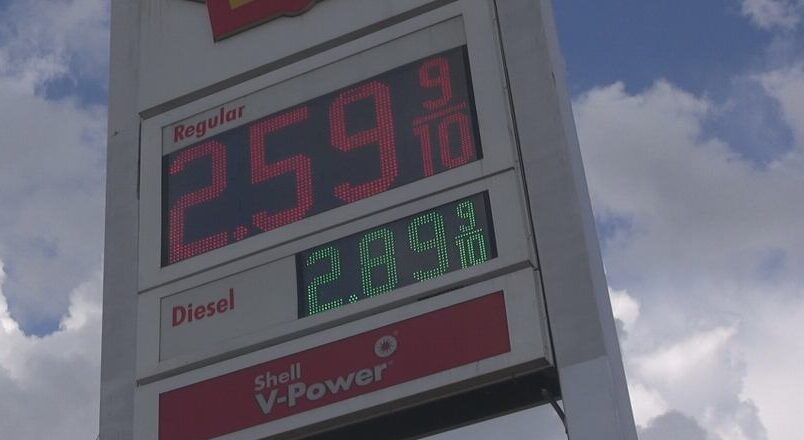Memorial Day 2025 is set to break travel records, with AAA projecting 45.1 million Americans traveling at least 50 miles from home, surpassing the previous record of 44 million set in 2005. This surge is largely attributed to the lowest gas prices in years, with the national average projected at $3.08 per gallon—the cheapest since 2021 and, when adjusted for inflation, the lowest since 2003. The decline in fuel costs is driven by a combination of factors, including a significant drop in crude oil prices, increased oil production by OPEC+, and tempered global demand expectations. Regionally, the Gulf Coast boasts the lowest prices at $2.79 per gallon, while the West Coast sees higher averages due to supply constraints and higher taxes. As Americans take advantage of these favorable conditions, the summer travel season is poised for a robust
Historically Low Gas Prices Set to Fuel Memorial Day Weekend Travel 2025
As millions of Americans prepare for their Memorial Day weekend getaways, they’re receiving an unexpected gift at the gas pump. For the first time in years, drivers are experiencing relief from what has traditionally been one of the most expensive travel periods of the year. With gas prices hitting multi-year lows, this Memorial Day weekend promises to be significantly more affordable for the record number of travelers expected to hit the road.
Overview: Cheaper at the Pump for Memorial Day Travelers
Record Travel Numbers Expected
The American Automobile Association (AAA) projects that Memorial Day weekend 2025 will see unprecedented travel volumes, with approximately 45.1 million Americans venturing at least 50 miles from home. Of these travelers, a staggering 39.4 million plan to drive to their destinations, representing nearly 87% of all Memorial Day travelers.
This surge in road travel comes at an opportune time, as favorable gas prices are encouraging more families to choose driving over flying. The combination of lower fuel costs and the flexibility that comes with road trips has created a perfect storm for automotive travel dominance during the holiday weekend.
Multi-Year Low Prices Provide Relief
According to Fox Business analysis, gas prices have reached their lowest levels in four years, while GasBuddy estimates they’re at their cheapest point since 2021. When adjusted for inflation, current prices may represent the most affordable gas since 2003, excluding the anomalous 2020 pandemic year when travel virtually ceased.
This dramatic price relief comes as a welcome surprise for consumers who have endured years of elevated fuel costs following global supply chain disruptions, geopolitical tensions, and post-pandemic economic recovery challenges.
Current Gas Price Situation
National Average Trends
As of the Monday preceding Memorial Day weekend, the national average for regular unleaded gasoline stood at $3.17 per gallon. However, GasBuddy forecasts an even more favorable average of $3.08 per gallon specifically for the Memorial Day weekend period.
These current prices represent remarkable year-over-year savings for consumers. When adjusted for inflation, gas prices are running 14% lower than the same period last year, while nominal prices are 11% below 2024 levels.
Summer Outlook Remains Optimistic
Industry analyst Andy Lipow projects that pump prices will remain in the favorable $3.25 to $3.50 per gallon range throughout the summer months, well below last year’s painful levels. GasBuddy offers an even more optimistic forecast, predicting a slight decline to a national average of $3.02 per gallon through Labor Day weekend.
Perhaps most encouraging for budget-conscious drivers, GasBuddy suggests the possibility of national averages dropping below the psychologically important $3.00 threshold by summer’s end—a milestone that would provide significant psychological and economic relief to consumers.
Regional Price Analysis
States with the Lowest Gas Prices
Southern and Gulf Coast states continue to dominate the list of most affordable fuel destinations. Mississippi leads the nation with an average of just $2.64 per gallon, followed closely by Louisiana at $2.69 and Alabama at $2.72.
The complete list of lowest-priced states includes South Carolina, Tennessee, Oklahoma, Arkansas, and Texas, all clustered around $2.77 per gallon. Kentucky ($2.85) and North Carolina ($2.87) round out the top ten most affordable states for gasoline.
Highest-Priced Regional Markets
West Coast drivers continue to face the steepest prices, with California leading at $4.83 per gallon—more than $2.00 above the cheapest states. Hawaii follows at $4.46, while Washington state comes in at $4.37 per gallon.
Other high-cost markets include Oregon ($3.94), Nevada ($3.87), Alaska ($3.59), Illinois ($3.42), Arizona ($3.37), Pennsylvania ($3.31), and Idaho ($3.27).
Regional Variations and Contributing Factors
The regional price disparities reveal underlying market dynamics across different areas of the country. The West Coast commands the highest prices at $4.29 per gallon due to limited pipeline connections, tight supply-demand conditions, elevated state taxes, and expensive fuel specification requirements.
Conversely, the Gulf Coast enjoys the nation’s lowest regional average at $2.79 per gallon, benefiting from substantial refining capacity and lower tax burdens. The East Coast, despite having the highest fuel demand, maintains a moderate $2.99 average, while the Midwest averages $3.03 and the Rocky Mountain region $3.13.
Remarkably, all regional averages show significant year-over-year declines, ranging from 10% to 17% in real terms, demonstrating the broad-based nature of current price relief.
Why Are Gas Prices So Low?
Crude Oil Price Collapse Drives Savings
The primary driver behind current low gas prices stems from a substantial decline in crude oil costs, which represent the largest component of retail gasoline pricing. Brent crude prices have fallen approximately $20 per barrel since mid-January, creating significant downstream savings for consumers.
This oil price decline reflects multiple converging factors that have fundamentally shifted global energy market dynamics in favor of consumers.
OPEC+ Production Increases
The Organization of Petroleum Exporting Countries and its allies (OPEC+) have contributed to lower prices through increased production decisions. While the group anticipates rising global oil demand, ongoing discussions about substantial production increases scheduled for June have helped moderate price pressures.
This strategic approach by OPEC+ represents a shift from previous years when the cartel prioritized price support through production restraint.
Additional Market Pressures
Several other factors have contributed to the favorable pricing environment. Economic growth concerns have tempered demand expectations, while record-breaking U.S. crude oil production has helped balance global supply.
According to GasBuddy analysis, uncertainty surrounding the Trump administration’s economic policies has also created market volatility that has generally favored lower prices.
Contrast with Typical Seasonal Patterns
Historical Spring Price Increases
Under normal circumstances, gas prices experience predictable seasonal increases during spring and summer months. This typical pattern results from heightened demand associated with summer travel season and the mandatory transition to more expensive summer-blend gasoline formulations.
Unprecedented Deviation from Trends
Historical data from the past decade (excluding the anomalous 2020 pandemic year) shows retail gas prices typically increase an average of 19% between January and May. This year’s pattern has deviated dramatically from this norm.
Between the first Monday of January and May 19, 2025, prices have increased just 4%—equivalent to only 13 cents per gallon. This modest increase falls far short of typical seasonal patterns and represents a significant departure from historical norms.
Implications for Travel Spending
Potential Savings for Travelers
The historically low gas prices translate into meaningful savings opportunities for Memorial Day travelers. A typical 1,000-mile round trip that might have cost $120 in fuel last year could cost approximately $105 this year, representing $15 in direct savings per trip.
For families planning multiple trips throughout the summer, these per-gallon savings compound into substantial household budget relief that can be redirected toward other vacation activities or saved entirely.
Offsetting Cost Increases in Other Categories
However, travelers should remain aware that other vacation-related expenses are trending upward, potentially offsetting some gas savings. Entertainment costs have risen 3.4% year-over-year, while dining out expenses have increased 4%.
These inflationary pressures in complementary travel categories mean that while fuel savings are genuine, the overall cost of vacation travel may not decline proportionally. Smart travelers will budget accordingly, recognizing that gas savings represent just one component of total travel expenses.
As Memorial Day weekend approaches, the combination of record travel volumes and historically favorable gas prices creates an optimal environment for American road trips. While other vacation costs continue rising, the substantial relief at the gas pump provides a welcome respite for families eager to explore the country during the unofficial start of summer travel season.




